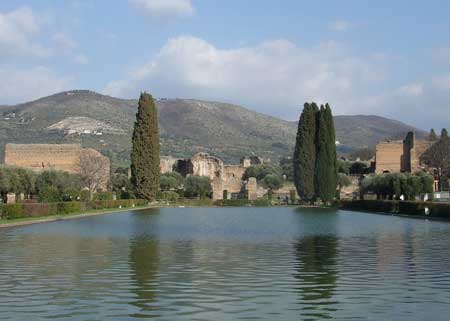Hadrian’s Villa (Villa Adriana in Italian) is a large and awe-inspiring archaeological site outside Rome. Spreading over acres of countryside, this is the spot chosen by the Emperor Hadrian for a huge palace. His luxurious complex included a theatre, libraries, a stadium, grand water features, thermal baths, servants’ quarters and underground supply tunnels. The scale is amazing, and today’s visitors can spend hours wandering among the extensive ruins. The villa is on the plains below the hill town Tivoli, which is also famous for the fountains and waterfalls of the Villa d’Este. It can be visited by public transport, although travellers should read the details below and look up the latest timetables before they travel.
Hadrian supervised the building work personally, and architectural features were included to remind the emperor of his travels, of the countries he had visited and the times spent with his drowned favourite, Antinous, around whose youthful charm a cult was established. The emperor who built a wall across Britain was an educated, complex and interesting soldier, and his countryside palace, even in ruins, provides fascinating insights into his world.
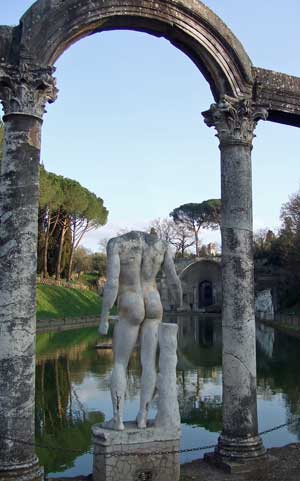
Visiting Hadrian’s Villa
One of the first stops on a tour of the villa is a little pavilion which houses a 1950s plastic model of the villa, giving visitors an idea of the original appearance of the site. Then, passing through a large wall you arrive at a small rectangular lake, a restored fishpond once enclosed within a Greek-style gymnasium. It is thought that Hadrian modelled parts of his palace on sites he knew and admired throughout his empire, from Athens to Egypt.
The most evocative parts of the huge site include the ‘Naval Theatre’, a wonderful study or retreat for the emperor on a tiny island surrounded by a circular colonnaded moat; the Canopus, a long lake ornamented with statues and arcades and backed by elegant halls for feasting; a Greek theatre; and wide underground tunnels – large enough for horses and carts – used presumably for servicing the palace. Fine mosaics are still preserved in a row of sleeping-chambers, and some of the more recent finds and statues from the site are on display in a museum near the Canopus (not always open).
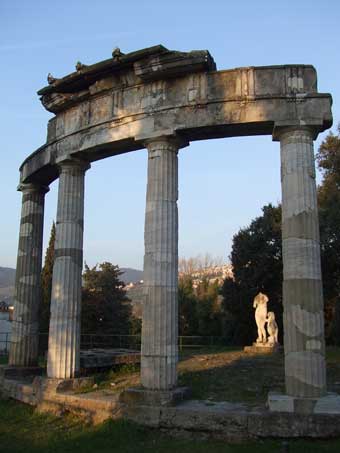
Practical advice
The villa covers a huge area and is pretty confusing. Notice-boards and plans displayed around the site are helpful, and there are maps and guides for sale in the bookshop by the entrance. If you are particularly interested in the site’s history, it really helps to have a detailed guidebook which will give context to what you are seeing – or you could even consider hiring a tour guide. Even though some of the building’s uses are speculation, the descriptions will bring the visit to life. You could easily spend hours exploring the grounds, so it’s a good idea to bring a bottle of water (you can refill it at a tap just inside the gates) and some food. I’d recommend allowing at least 2-3 hours. There are benches and pleasant, shady stretches of grass where you can sit and relax, admiring the ruins, dreaming of the past or just enjoying the quiet countryside atmosphere. Visitors should wear practical shoes and comfortable clothing, and consider sun protection in the hotter months of the year.
Admission and facilities
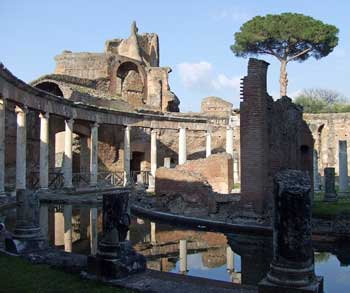
The site is open every day, and admission to the Villa costs 10 at the time of writing, with the usual reductions applicable at state monuments. Check the latest opening times and prices before you travel on the official website. The ticket office is outside the main entrance, in a little complex by the car park where there is also a bar, toilets and a shop selling souvenirs and guidebooks. There are more toilets a short way inside the entrance. The bar sells light refreshments, and a restaurant in an adjacent hotel serves more filling meals; there is also a small refreshment kiosk within the site.
Public transport from Rome
Unluckily there is no totally hassle-free way to reach Hadrian’s Villa from Rome. For a convenient or time-efficient visit, you might consider paying extra to come with an organised tour (try a company like Viator, listed on the right). However, it isn’t too hard to make a trip using public buses, it just takes a bit of planning and patience.
From Rome to Tivoli: Frequent buses operated by Cotral run from Rome to Tivoli along the Via Tiburtina. They depart from a bus station outside Ponte Mammolo Metro station on Linea B, nine stops from Stazione Termini. There are turnstiles from the platform at Ponte Mammolo station leading directly to the bus departure area – however, when I visited, the only ticket sales on this level were from a machine which required you to know what mileage ticket you required. On the level below is a bar where bus tickets are more easily acquired in person. This bus service stops on the main road, the Via Tiburtina, about a mile from Hadrian’s Villa. Ask the driver where to get off, then walk along a suburban road, Via di Villa Adriana, to the site’s entrance, a walk of around 15-20 minutes. An alternative service from Rome to Tivoli stops just a five-minute walk from the Villa Adriana, but this runs much less frequently and takes a detour on the way; the travel time is around 45 minutes.
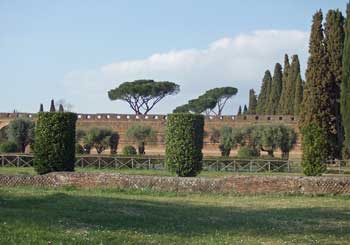
From Tivoli to the Villa Adriana. An alternative way to travel to Hadrian’s Villa is to take a fast service bus to the town of Tivoli itself, then to catch a second bus out from Tivoli to the archaeological site. A local company called CAT runs a bus service (numbers 4, 4X) from Tivoli to entrance of the Villa Adriana. It calls at various bus stops in Tivoli including Piazza Garibaldi. Tickets cost 1.30 per journey and can be bought at the CAT office, shops and news-stands in Tivoli and from a bar opposite the bus stop (buy your return ticket in advance). The bus stop for the Villa Adriana is at Largo Marguerite Yourcenar, right by the site’s entrance. Since the CAT local bus takes the same Via Tiburtina route up into Tivoli as the Cotral buses, you can cross the road and change to the Rome-bound service without riding all the way back into Tivoli.
Planning a day trip
If you are prepared for a long day sightseeing, I would recommend visiting both Tivoli and Hadrian’s Villa in one ambitious excursion. Arriving in Tivoli in the morning, you can spend a couple of hours visiting the town and perhaps seeing one of the other two villas. Then after lunch (or bringing a picnic), set off in the CAT bus to the Villa Adriana. You can then return to Rome by one of three methods: catch the occasional Cotral bus which passes near the site, if you’ve checked the timetable (leave the villa, walk up towards Via di Villa Adriana, past a small park, and the stop is short distance further on), walk back to the Via Tiburtina to catch one of the more frequent Rome Cotral buses, or take the CAT service either to the Via Tiburtina or all the way back into Tivoli and change there for a Rome service. It can be slow getting back into Rome during the rush hour, so it’s worth considering visiting on a Saturday when the roads may be clearer.
Tivoli has several attractions and is a very interesting destination in a picturesque setting, so if you’re enthusiastic it’s worth considering spending a night or two here to explore at a more comfortable pace and enjoy the small-town atmosphere.
> Tivoli travel and tourist information
> Tivoli hotels and B&Bs
Reading, preparation and further interest
To add to the experience of the Villa Adriana, Marguerite Yourcenar’s fictionalised ‘autobiography’, Memoirs of Hadrian, provides a moving and learned portrayal of the man who ruled most of the known world, and built this grand villa. The little square at the entrance to the villa is now named after Yourcenar.
Most of the sculptures and some of the architectural features from the villa have been distributed throughout other museums. You can see some marble sculptures from this site at the British Museum in London, including a marble bust of Hadrian himself. The Castel Sant’Angelo in Rome was built by Hadrian as his mausoleum; he also rebuilt the Pantheon.
The Blue Guide to Rome contains several informative pages on the Villa Adriana, including a plan of the archaeological site.
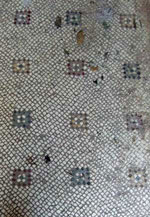
Useful external links
Villa Adriana official website
Viator excursion from Rome to Tivoli
British Museum finds from Hadrian’s Villa
Lazio destinations
- About the Lazio region
- Anzio
- Bracciano
- Calcata
- Castel Gandolfo
- Castelli Romani
- Cerveteri
- Formia
- Frascati
- Gaeta
- Palestrina
- Pontine islands
- Ponza
- Rome
- Sperlonga
- Terracina
- Tivoli
- Ventotene
- Viterbo
